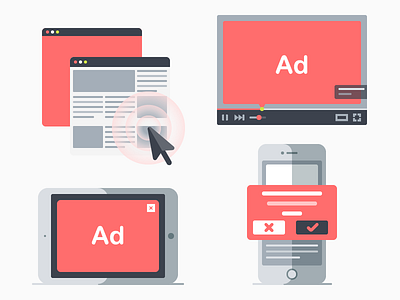In-Page Push Ads: The Next Evolution in Digital Advertising
In-Page Push Ads: The Next Evolution in Digital Advertising
Blog Article
As the digital advertising landscape is constantly on the evolve, marketers are constantly searching for innovative solutions to capture user attention without getting intrusive. One such innovation which includes gained significant traction recently is in page push ads. Combining the familiarity of traditional push notifications with the seamless integration of display ads, in-page push ads offer a unique and effective way to activate users since they browse the internet.
What Are In-Page Push Ads?
In-page push ads really are a type of digital advertisement that appears inside a webpage, mimicking the look and feel of traditional push notifications. Unlike standard push notifications, which are delivered directly to a user’s device (e.g., smartphone or desktop), in-page push ads are displayed from the browser window whilst the user is actively browsing a web site. They typically appear as small, non-intrusive banners or boxes that slide in from the corner in the screen, often with a compelling message, image, or call-to-action (CTA).
These ads do not require users to opt-in or grant permission, driving them to easier to deploy in comparison to traditional push notifications. However, they're designed to be less intrusive than pop-ups, ensuring a better user experience while still delivering high visibility for advertisers.
Why In-Page Push Ads Are Gaining Popularity
No Opt-In Required
One from the biggest challenges with traditional push notifications may be the need for users to opt-in to receive them. In-page push ads eliminate this barrier by appearing directly from the webpage, making sure your message reaches a wider audience without requiring prior consent.
High Visibility and Engagement
In-page push ads are built to grab attention without disrupting the user experience. Their placement from the browser window ensures they may be seen, while their non-intrusive nature cuts down on the likelihood of users immediately closing them. This balance of visibility and user-friendliness results in higher engagement rates when compared with traditional pop-ups or banners.
Seamless Integration with Content
Unlike traditional display ads that could feel disconnected from your content of a webpage, in-page push ads blend more naturally in to the browsing experience. They are often meant to match the style and feel of the website, driving them to less disruptive and much more likely to resonate with users.
Cross-Platform Compatibility
In-page push ads work seamlessly across devices, including desktops, tablets, and mobile phones. This cross-platform compatibility helps to ensure that your ads reach users however they access the net, driving them to a versatile tool for digital marketers.
Cost-Effective and High ROI
In-page push ads are usually more affordable than other designs of digital advertising, such as video ads or native ads. Their high engagement rates and driving privileges clicks and conversions make sure they are a cost-effective choice for businesses trying to maximize their roi (ROI).
Easy to Implement
For publishers and advertisers, in-page push ads are relatively easy to implement. They not one of them complex coding or integration, making them accessible to businesses of all sizes.
Best Practices for In-Page Push Ads
To get the most from in-page push ads, it’s vital that you follow best practices that ensure effectiveness and keep a positive user experience:
Keep It Simple and Clear
In-page push ads have small space, so concentrate on delivering a tight and compelling message. Use clear, action-oriented language and include a strong CTA to encourage clicks.
Use Eye-Catching Visuals
Since these ads depend on visual appeal, use high-quality images or graphics that grab attention. Ensure the design aligns along with your brand identity and the overall look from the website.
Time Your Ads Strategically
Avoid displaying ads prematurily . or too much, as this can annoy users. Use timing triggers, for example when a user has scrolled by way of a certain percentage in the page or spent a specific amount of time on the site.
Target the Right Audience
Leverage data and analytics to focus on your in-page push ads for the most relevant audience. Consider factors like user behavior, demographics, and browsing history to provide personalized and relevant messages.
Optimize for Mobile
With many web traffic received from mobile devices, ensure your in-page push ads are optimized for smaller screens. Use responsive design and try out your ads across different devices to ensure a seamless experience.
Monitor and Adjust
Continuously monitor the performance of the in-page push ads, including click-through rates (CTR), conversions, and user feedback. Use this data to refine your strategy and improve results as time passes.
The Future of In-Page Push Ads
As digital advertising is constantly evolve, in-page push ads are poised to play an increasingly important role. Advances in AI and machine learning will enable much more precise targeting and personalization, allowing advertisers to supply hyper-relevant messages to users. Additionally, the integration of interactive elements, including quizzes or mini-games, could further enhance engagement and earn in-page push ads even more effective.
In conclusion, in-page push ads represent a powerful and innovative advertising format that combines the best of push notifications and display ads. By delivering high visibility, seamless integration, and cost-effective results, they provide a compelling solution for marketers looking to have interaction users in a very non-intrusive way. As the digital landscape continues to shift, in-page push ads are prone to become a vital tool in every single marketer’s toolkit.